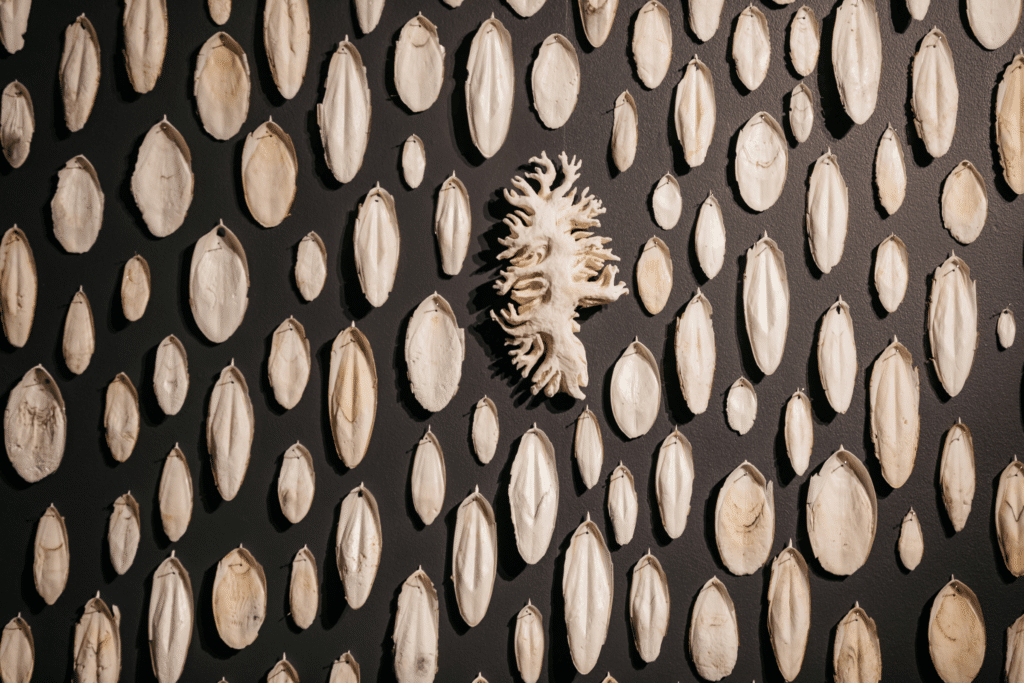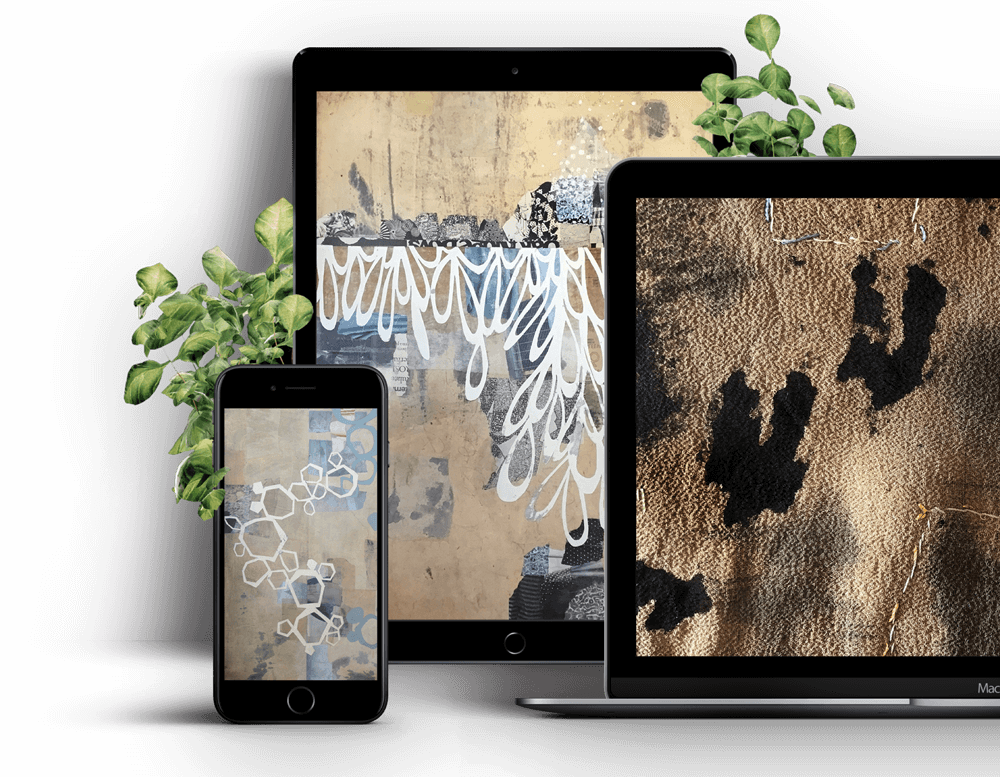Jeannet Leendertse: Seaweed Baskets
Get ready to learn about a unique medium in the fibre arts world. As artist Jeannet Leendertse talks to us about her work with seaweed.
Jeannet’s Friday Feature Artist Interview can be found at the bottom of this page.
Born in the Netherlands and growing up on the Dutch shore, Jeannet Leendertse’s fibre work now responds to the rugged coast of Maine in the United States, where she finds sculptural forms in the landscape and its creatures.
From the vulnerable, delicate, fragile vessels to the biomimicry of her pleated silk sculptures, it’s clear to see Jeannet has a deep appreciation and affection for nature. Her work uses the living construction material seaweed, tightly sewn and coiled with linen thread, to create astonishingly sculptural vessels.
Jeannet found time to talk to Fibre Arts Take Two about her life and the beauty and perils of seaweed.
Initial designs
Jeannet didn’t start her artistic career with fibre arts. “I always had an interest in textiles,” she says, “but I think I ended up studying graphic design because it seemed like a practical choice. I could see myself making a living doing it. Choosing a practical direction was definitely on my mind.”
After years of successful work in book design, Jeannet needed a change. “I started thinking, ‘Oh, I need something new to feel as excited again as I used to about creating new things’. I think every artist has this. We do it because you make something, and you just get so excited. I felt that that was lessening as I was designing books, so I felt I needed fresh materials to re-inspire.”
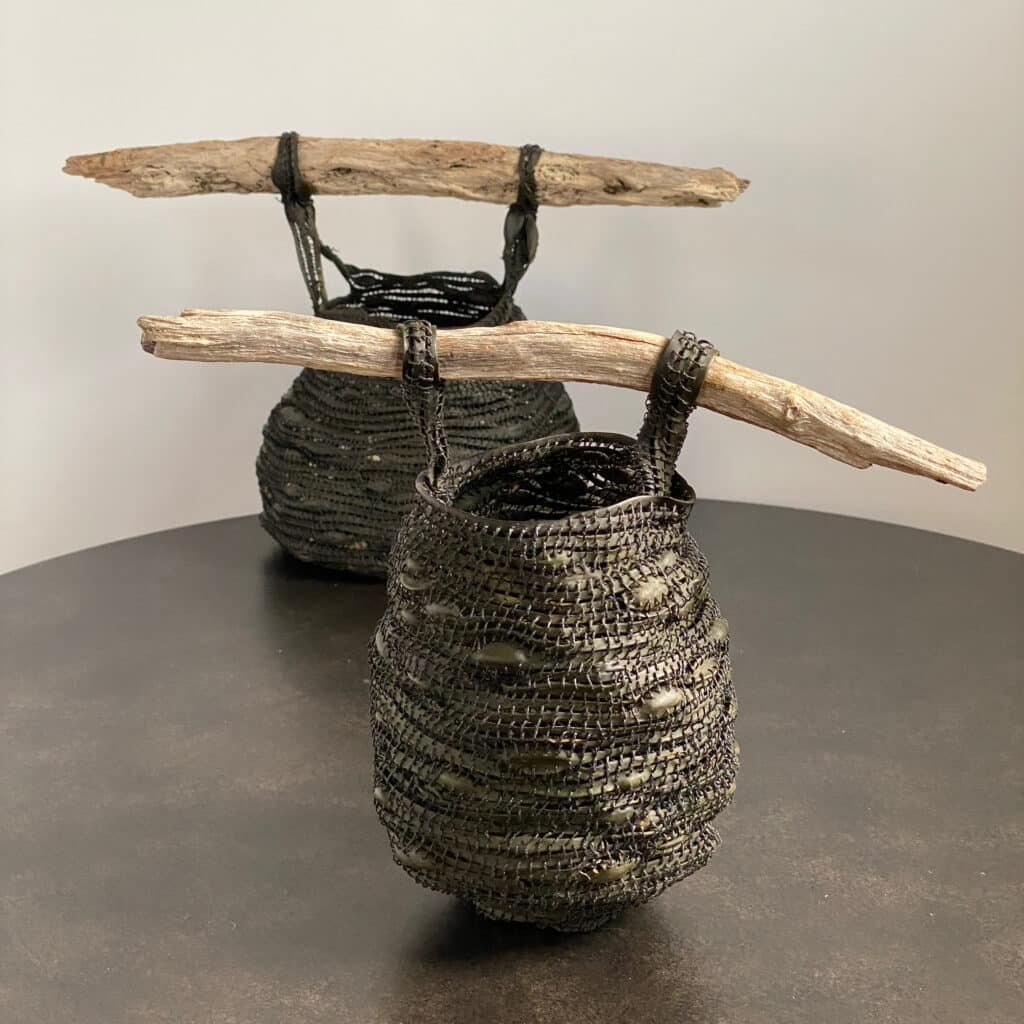
Seaweed
After switching to fibre arts, Jeannet chose a unique material for her latest work. Very few artists chose seaweed as their medium of choice, but that’s exactly what Jeannet has done.
“There’s just so much of it on the Maine coast,” she says, “because the tidal zone is so large. It can sometimes be a foot thick in terms of layers.
I kept on thinking, ‘what can I do with it?’ because it really catches your eye. In the spring, it’s a fresh green, and then in the fall, it turns into this golden colour. Then one day, I walked on the beach, and I saw this bunch of seaweed that was blown into a nest shape by the wind, and all of a sudden, I was like, ‘wow, this has some integrity. What if this was stitched together when it was still wet? Then, in its dry form, it might actually hold together’. So I took some home and I just stitched it and then I was like, I don’t have to really do anything. I can just stitch it wet and dry it, and that doesn’t need to be more complicated than that.”
Seaweed struggles
Working with seaweed has its challenges, “Well, it’s salty and cold and wet,” Chuckles Jeannet, “My hands some days don’t look so good. It’s hard on the skin, so I’m using lots and lots of lotion. The other, other thing is that you need to keep it cold because if you don’t, it starts to disintegrate. I keep everything wet and cold until the piece I’m working on is finished, and then I dry it all at once so that you don’t get any decomposing going on because that’s where it gets smelly.”
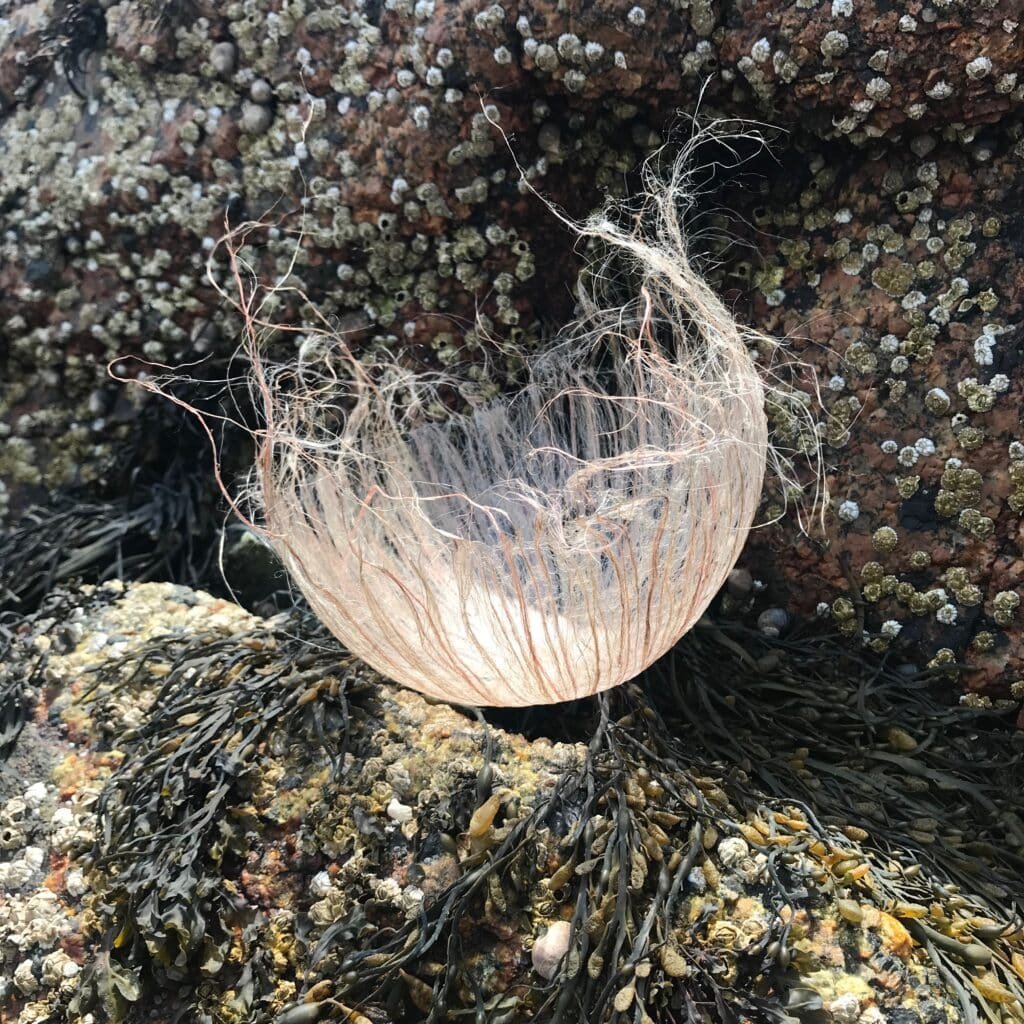
Sustainable seaweed
As with any natural medium, Jeannet is very conscious of her environmental impact when foraging for seaweed. “I forage in an area where there’s just so much of it,” she says, “I try to be extremely careful about how much I take and where I take it from. I try to forage just in areas already getting a lot of traffic, so maybe near a public dock or places like that. I leave the more natural areas undisturbed.”
Jeannet also says that how she forages is as important as the location. “I forage just a couple of branches from each plant as you would prune a perennial,” she says, “They recommend leaving at least 16 inches of the branch intact. Never remove it at its root. That way, it can regenerate easily because it provides an amazing habitat. So many creatures can stay moist within the seaweed, that’s how they survive, and birds find food among it, and it’s a whole other habitat for fish.”
Steinbeisser
Recently Jeannet worked in collaboration with the experimental culinary group, Steinbeisser.
“This organisation puts celebrity chefs together with craftspeople looking to change the dining experience,” explains Jeannet, “When they work with craftspeople, they ask you to come up with a new approach to an everyday utensil or dish or glass or whatever. Since I was making baskets, they asked me to make a bread basket. It made me think of the function of the breadbasket. How can you make that different? Then I was thinking about the whole experience of going to a restaurant where they put this bread basket in the middle of the table, and usually, there’s not enough bread there, and you become really aware in the group, ‘Am I going to be taking this last piece?’ I was thinking; maybe we should just make this really awkward gesture of reaching in that central breadbasket even more awkward and more self-conscious by having to reach through one of these tubes into the belly of this beast.”
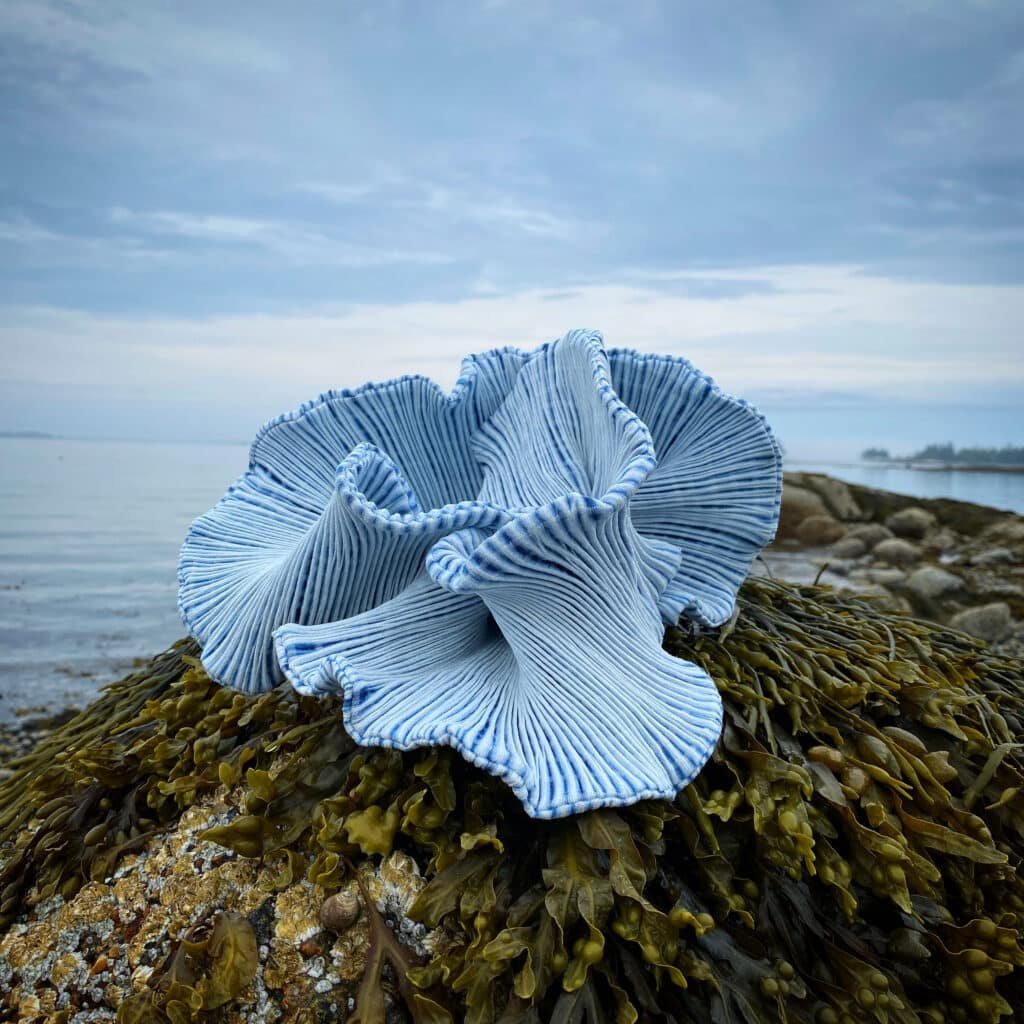
About the artist
Jeannet Leendertse was born in the Netherlands and grew up on the Dutch shore.
After receiving a Bachelor of Arts with honours in graphic design at the Academy of Art and Design, St. Joost in the Netherlands. Jeannet was a book designer for many years, winning national and international awards.
Her accessories have been featured in the Boston Museum of Fine Arts gift collection and can be found at the Society of Arts and Crafts Boston and artful home. They are also offered at the Textile Museum in the Netherlands. Jeannet has exhibited in a number of group exhibitions, including recently the Kahun Museum of American Art interwoven, contemporary basketry.
Join Our Newsletter
OUR YOUTUBE CHANNEL
View our interviews and more on our Youtube channel!
OUR FACEBOOK GROUP
Join our Community and stay updated with our upcoming announcements!

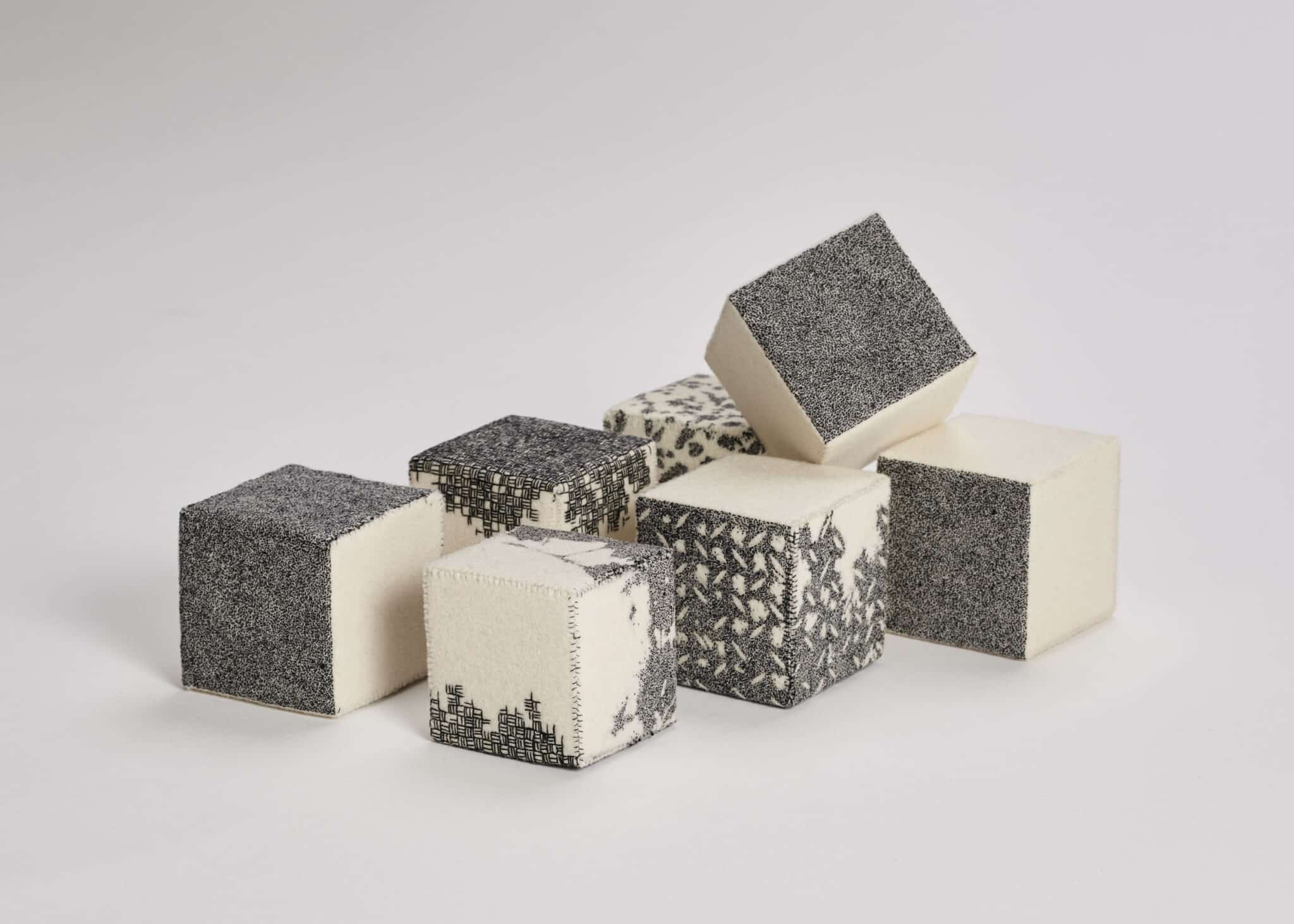
.jpg)
